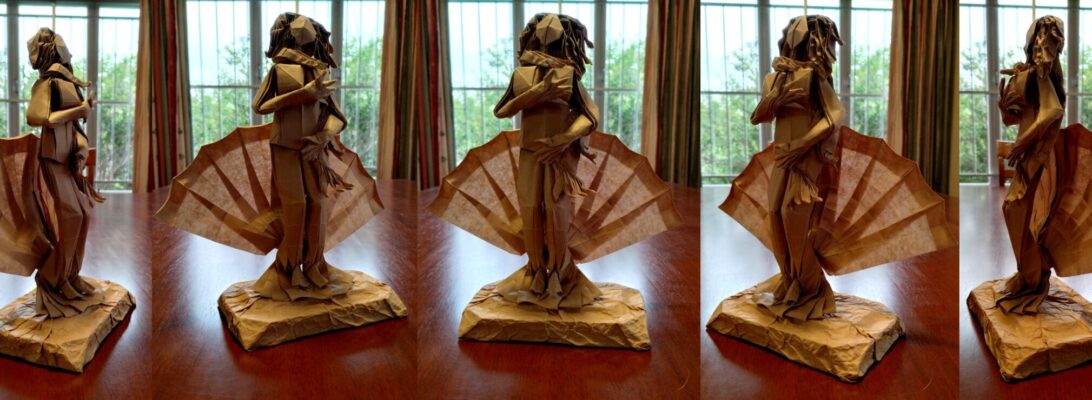A Masu (or box) was traditionally square and used to measure rice in Japanese kitchens. These days, masu are typically used to sip Sake out of:
Having mastered David Brill’s Square Masu, I thought it time to try the pentagonal one. Apparently the pentagonal masu exists only in Origami circles – this makes sense as the woodworking skill necessary to make this in timber breaks my brain.
Page division into 6ths (to allow overlap/join) then gentle faceting and a magic corner hinge joint results in a lovely 3d shape that feels like it has volume.
I used thickish paper and found some of the internal collapses tough work to make them behave and sit tidily but overall it is a fin fold because you really have to think through how it works before trying the collapse.


















